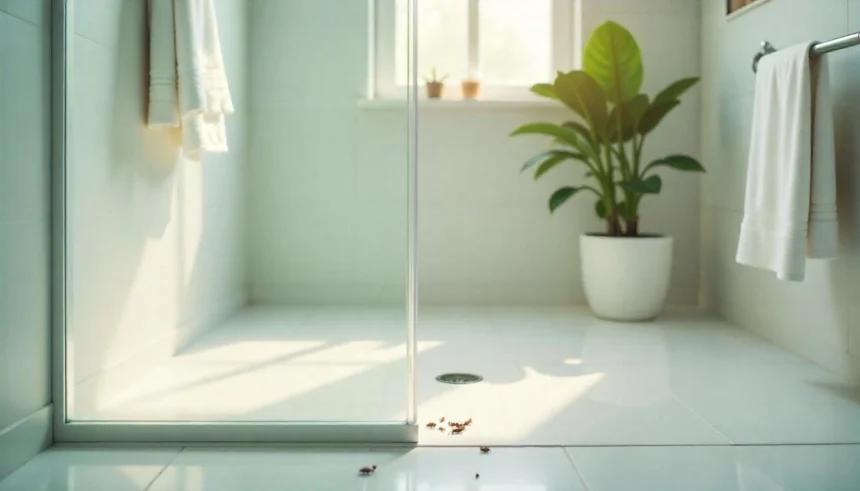Introduction
Drain flies, also known as sink flies or moth flies, can be a pesky household nuisance. These tiny, winged insects thrive in damp environments, particularly in sinks, drains, and other areas with stagnant water. While they are generally harmless, an infestation can be annoying and unsanitary. Fortunately, eliminating drain flies is entirely possible with a few effective strategies. In this guide, we’ll explore how to identify drain flies, their causes, and step-by-step methods to get rid of them permanently.
Identifying Drain Flies
Before tackling a drain fly problem, it’s crucial to confirm that you are dealing with the correct pest. Drain flies are small (about 1.5 to 5 mm), dark-colored, and covered in fuzzy hairs, giving them a moth-like appearance. They have a distinctive habit of hopping or fluttering rather than flying smoothly.
Signs of Drain Fly Infestation:
- Small, moth-like flies appearing around sinks, tubs, and drains.
- Clusters of flies near kitchen or bathroom plumbing fixtures.
- Slimy, gunky buildup inside drain pipes, where drain flies breed.
- Larvae (tiny worm-like creatures) spotted in stagnant water or the sides of drain pipes.
If you suspect a drain fly problem, you can confirm their presence with a simple test: cover the drain with duct tape overnight. If flies get stuck to the tape by morning, you have an infestation.
Causes of Drain Fly Infestation
Drain flies thrive in moist, organic matter, where they lay eggs and multiply rapidly. The most common causes include:
- Clogged or slow drains: The buildup of grime and debris provides an ideal breeding ground.
- Standing water: Unused drains, leaky pipes, or areas with water accumulation can attract drain flies.
- Dirty garbage disposals: Food residue in kitchen sinks can contribute to infestations.
- Neglected septic systems: An unmaintained septic tank can become a breeding site for these pests.
How to Get Rid of Drain Flies: Step-by-Step Methods
Eliminating drain flies requires a combination of cleaning, treatment, and prevention methods. Follow these steps to get rid of them for good.
Step 1: Clean and Scrub the Drains
The first step in eliminating drain flies is to remove their breeding ground by thoroughly cleaning the drains.
How to Clean Your Drain Effectively:
- Use a drain brush – Insert a long, stiff-bristled brush into the drain and scrub away any built-up gunk and slime where flies lay eggs.
- Pour boiling water – Boil a kettle of water and slowly pour it down the drain to kill larvae and loosen debris.
- Use a plumbing snake (if needed) – If your drain has a major clog, use a plumbing snake to remove stubborn blockages.
Step 2: Natural Home Remedies to Eliminate Drain Flies
Several household ingredients can help eliminate drain flies without using harsh chemicals.
1. Baking Soda and Vinegar Method
- Pour ½ cup of baking soda into the drain.
- Follow it with 1 cup of white vinegar.
- Let the mixture fizz and sit for 15-30 minutes.
- Flush with hot water to clear out residue and kill fly larvae.
2. Bleach Solution (For Severe Infestations)
- Mix one part bleach with ten parts water.
- Pour it down the drain and let it sit for 10 minutes.
- Rinse with cold water.
3. Apple Cider Vinegar Trap
- Fill a small bowl with apple cider vinegar and add a few drops of dish soap.
- Cover the bowl with plastic wrap and poke small holes.
- Place it near the infested drain to attract and trap adult flies.
Step 3: Use Commercial Drain Cleaners
If natural methods do not work, enzyme-based drain cleaners can help break down organic matter inside pipes. Look for a bio-enzymatic drain cleaner that is safe for pipes and effective against organic buildup.
Step 4: Prevent Future Infestations
After eliminating drain flies, follow these preventative steps to keep them from returning:
- Regular Drain Cleaning: Use baking soda and vinegar once a week to prevent organic buildup.
- Fix Leaks and Standing Water: Repair any leaking pipes and ensure no water is pooling around drains.
- Keep Drains Dry: If possible, wipe down sinks and drains before bed to remove excess moisture.
- Use Drain Covers: Mesh screens or drain covers can block flies from entering drains.
- Maintain Your Septic System: Regularly clean and inspect your septic system to prevent breeding grounds.
Final Thoughts
Getting rid of drain flies requires a combination of cleaning, treatment, and long-term prevention. By regularly maintaining your drains, fixing leaks, and using simple home remedies, you can eliminate these pesky insects and keep your home fly-free. If the infestation persists despite your best efforts, consider contacting a pest control professional for further assistance.







